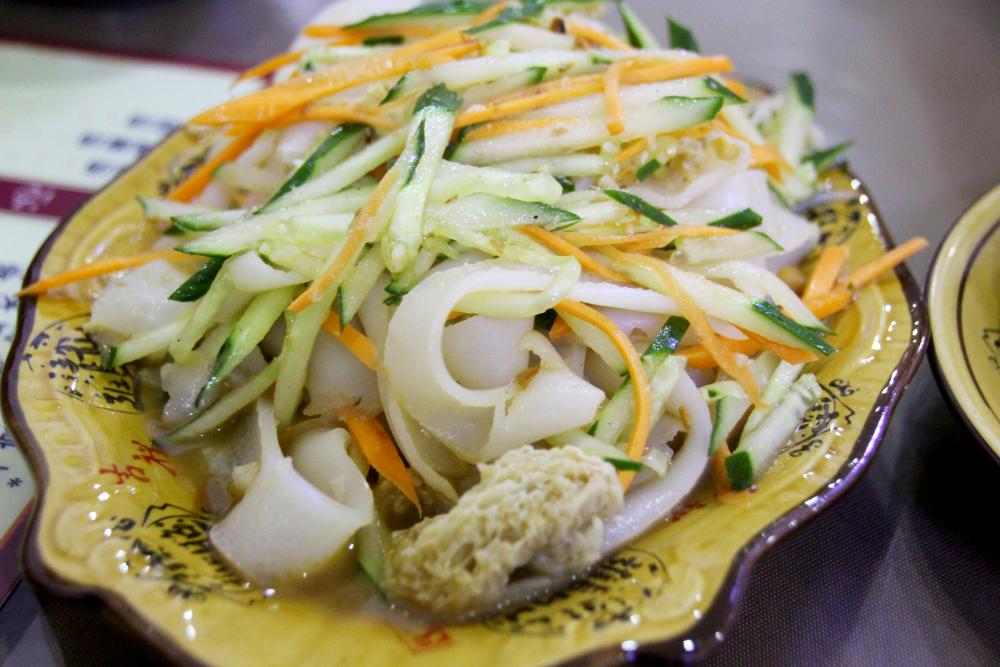It might sound off-putting, but a Xi 'an favourite is 凉皮 (liáng pí) - literally 'cold skin', another noodle dish. In this type, the noodle making method is somewhat unusual.

They are made from flour (wheat or rice) mixed with lightly salted water to make a dough. So far nothing unusual.
The dough is then rinsed again and again with more water until all the starch is removed. The rinsing water is reserved and when all the starch has been extracted, the dough is discarded or used in another application (see below). The starchy water is rested overnight.
The starch settles to the bottom and is collected, with the clear water being discarded. The starch is then spread out into a layer to make a 'skin' and steamed until it sets into a sheet. It is then cooled and sliced into thick noodles.
The noodles are always served cold, often from street side carts (and Xi'an can be bitterly cold in winter). They are mixed with various vegetables including bean sprouts, cucumber, carrot, daikon radish, peanuts etc and covered in a spicy sauce.
The discarded dough is often used to make seitan aka wheat gluten which is also frequently served in the dish.




